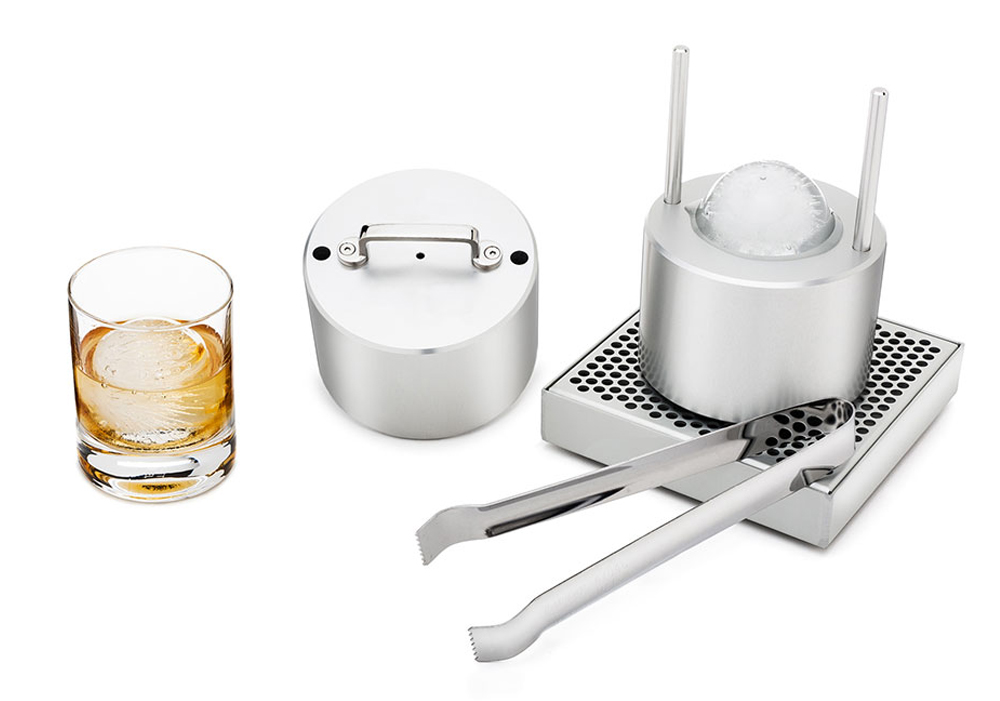There’s no reason to accept the tired belief that as you sip away on a cocktail, the drink will go from refreshing to a watered-down version of its once-tasty self. “In general, a cocktail is as good as its least greatest ingredient,” says Gary Gruver, senior beverage manager, Global Operations for Marriott International.
And that subpar ingredient? “It’s often the ice,” adds Gruver. “[It’s] too small and it over dilutes the cocktail, downgrading the whole experience.” Yet Gruver and his team may have just hack the system. Meet: the Ice Ball Press.

New Ice on the Block
In recent years, bars have been stepping up their ice game—and fans of Marriott’s Bourbon Program have been some of the lucky consumers in on the trend.
Instead of small cubes that make fine whiskey wilt, patrons enjoy their cocktails amped up with a perfect two-inch ice ball. With less surface area of the ice hitting the drink— whether straight over rocks or mixed—the ice dilutes far slower. It’s all cool, not watery.

Marriott’s ice balls also add a touch of theater to the order. Place an order—say, a perfectly in-fashion old fashioned, and the bartender doesn’t just mix up the drink. With the help of an Ice Ball Press, she’ll also craft a frozen sphere right at the bar. After placing ice from a mold into the press, gravity goes to work. As the top of the press slides down, it melts and carves away the ice. The final product is a two-inch ice sphere, ready to go to work.
As Gruver sees it, the Ice Ball Press creates a dialogue between bartender and customer. “Most people just think ice is ice,” he says. “So, people ask questions.” An ice ball- inspired chat with the bartender helps people understand that ice is as much an ingredient in their drink as it is a way to cool it off.
Ice-Ball Mechanics
The rate ice balls dissolve depends on the kind of drink they accompany. If it’s a straight spirit of around 86 proof, the drink will be gone long before the ice ball is gone. But fill the glass with a barrel-proof whiskey, which has a higher proof and more heat to it, and the melt goes a bit faster. What’s more, the higher proof also slows the drinking down a bit, giving the ice more time to melt.
As for the glass its served in, Gruver recommends a bourbon glass with an hourglass shape, something that allows the ice ball to sit on the bottom of the glass. You don’t want the ice to sit high in the glass, wedged between the sides, because the liquid will be below it and won’t get cooled. A rocks glass is also the right height to keep the ice ball from rolling into lips or teeth.
Yet for Gruver, there’s more to ice balls than just cooling hydration. He recommends adding an orange twist or cherry into the water as it freezes to add to the visual experience. He also suggests flavoring the water with bitters or smoke so that “as the sphere melts, the cocktail evolves.”
After one Ice Ball Press cocktail, the verdict is clear. As Gruver puts it: “It makes the last sip as good as the first.”
